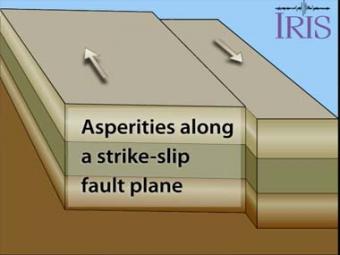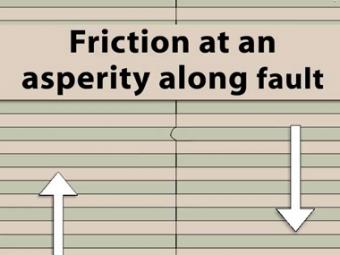Do faults break all at once, or in many short segments?
This demonstration, squeezing uncooked spaghetti noodles in a wood template set in a vise, effectively shows how asperities (stuck patches) on a fault rupture at different times. There are many asperities, or rough stuck areas along the interface of the adjacent walls of a fault. When one asperity slips, there is an added load on the adjoining asperities. In a large earthquake there is a cascading effect as each zone that slips loads the next zone, which then slips, and so forth, sometime for hundreds of miles, in a process that can continue for 5 or more minutes. Narration by John C. Lahr.
Faults often have asperities (stuck areas) along the length of a fault

An asperity is an area on a fault that is stuck or locked. Scientists study areas along long fault zones that have not had earthquakes in a long time in order to determine where the next earthquake may occur. As long faults move, all areas of it will, at some point, become "unstuck" causing an earthquake relative to the the size of the asperity that finally breaks.

View looking into a fault zone with a single asperity. Regional right lateral strain puts stress on the fault zone. A single asperity resists movement of the green line which deforms before finally rupturing.